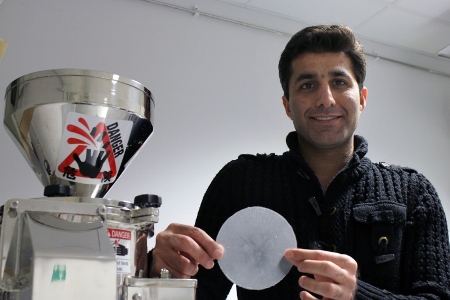A research team at the Luleå University of Technology has developed an economical and eco-friendly process to manufacture cellulose nanofibers by recycling cellulose sludge released by Domsjo Fabrikerna, a Swedish company manufacturing special cellulose for use in the production of viscose fibers.
 Medhdi Joonobi, postdoctor at the Department of Engineering Sciences and Mathematics at Luleå University of Technology.
Medhdi Joonobi, postdoctor at the Department of Engineering Sciences and Mathematics at Luleå University of Technology.
As of today, the cellulose sludge is not reused. Cellulose industries in Sweden store the sludge in large tanks on land as they were prohibited from disposing the waste into the ocean.
The cellulose nanofiber production from Domsjo Fabrikerna’s cellulose sludge is 95%, a most profitable value when compared to a 48% of cellulose nanofiber production from lignin residues, 48% from wood chips, 20% from carrot residues, 14% from barley and 13% from grass. The isolation of cellulose nanofibers from other bio-residues is an energy-consuming process but Domsjo Fabrikerna’s cellulose sludge consumes less energy for producing high amount of cellulose nanofibers.
Professor Kristiina Oksman explained that Domsjo Fabrikerna’s special cellulose is small in size and has high cellulose content, thus eliminating the requirement of a chemical pre-treatment process of fibers prior to the production of cellulose nanofibers. These cellulose nanofibers may be shorter when compared to the pulp-made cellulose nanofibers, but are finer and can produce dense films with superior barrier properties. They can be used for producing low-cost and eco-friendly milk cartons, paper and packaging products.
This work is part of the Bio4Energy project. Oksman commented that the objective of this work is to produce novel materials by using the residues and thereby augment the value of the entire production chain. Now, Smurfit Kappa has expressed interest for the research team to study the conditions of cellulose sludge.